Extremes of Conformation | Brachycephalics
International efforts for health and welfare in brachycephalics and other breeds with extreme charateristics
Subcategories
-
The Brachycephalic Issue - Archives
Links to DogWellnet articles covering scientific research and management policies and kennel club programs to identify and address conformation and health issues in brachycephalic breeds- 1 article
17 articles in this category
-
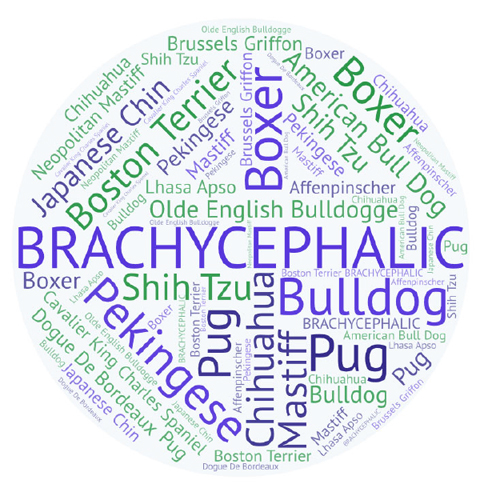 Table of Contents August 2021 - What's new with Brachycephalics? Health and Welfare of Brachycephalic (Flat-faced) Companion Animals - A Complete Guide for Veterinary and Animal Professionals Veterinarians and Brachycephalic Dogs - Ethics and Reality References & Resources List - Brachycephalic Dogs Great expectations, inconvenient truths, and the paradoxes of the dog-owner relationship for owners of brachycephalic dogs - PLOS BLOG Co
Table of Contents August 2021 - What's new with Brachycephalics? Health and Welfare of Brachycephalic (Flat-faced) Companion Animals - A Complete Guide for Veterinary and Animal Professionals Veterinarians and Brachycephalic Dogs - Ethics and Reality References & Resources List - Brachycephalic Dogs Great expectations, inconvenient truths, and the paradoxes of the dog-owner relationship for owners of brachycephalic dogs - PLOS BLOG Co- This page lists resources and references that pertain to management of brachycephalic breed's health and welfare. The links below represent International and National Approaches to Brachycephalic Breed Health Reforms in Dogs. Included are: links to Current Research, Veterinary organization's policies/whitepapers, Seminars / Workshops / Veterinary Congress presentations, Campaigns and more. This article is for Veterinarians and anyone interested in the short faced breed's health and welfare.
- 0 comments
- 1,582 views
-
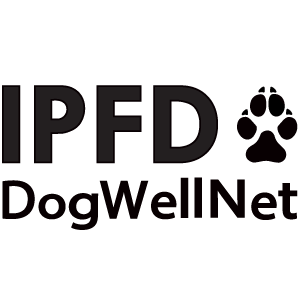 Dutch Kennel Club - Breeding Criteria Documentation (English) May 2020 The basic regulations in the Netherlands, relative to animal breeding in general, have been in place for some years; what is new is more stringent enforcement and application of specific criteria to certain breeds. See the Dutch Kennel Club's summary document 'The current position of the short-muzzled dog breeds in the Netherlands and what preceded it' for the long history of animal welfare regulation in the Nether
Dutch Kennel Club - Breeding Criteria Documentation (English) May 2020 The basic regulations in the Netherlands, relative to animal breeding in general, have been in place for some years; what is new is more stringent enforcement and application of specific criteria to certain breeds. See the Dutch Kennel Club's summary document 'The current position of the short-muzzled dog breeds in the Netherlands and what preceded it' for the long history of animal welfare regulation in the Nether- This article is a summary we (IPFD) have created describing the issues, the dialogue and challenges around regulatory actions in the Netherlands as of June 2020. The issue is having a polarizing effect across stakeholder groups, and it is our belief that the best results for all dogs are to be achieved by collaborative efforts. IPFD also promotes the considerations of impacts on dogs, breeds, and people when programs are put in place, given the complex nature of issues of health and welfare. This article is a compilation of resources for those who are exploring the situation.
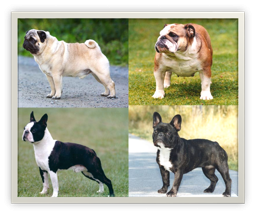 Table Of Contents
Table Of Contents
- Key points of the situation and background from 2019
- Dutch Kennel Club - Breeding Criteria Documentation (English)
- Stakeholder Responses
- DogWellNet Coverage and Dog Health Workshops Resources
- Kennel Club Programs
- Questions & Moving Forward... (also a good summary of major issues)
The government of the Netherlands has created a set of criteria about the conformation of short-muzzled dogs and regulations that prohibit breeding of any dog when one is of these is exceeded, regardless of the other criteria. Although the regulations apply to all breeders, as for other issues, pedigree dog breeders who register puppies with the national kennel club (Raad van Beheer, Dutch Kennel Club, DKC) are the most visible and traceable and there is an emphasis on the DKC to enact and enforce these guidelines. And it does not restrict ownership of these dogs or purchase and importation of dogs. Controversies and challenges include:- In the 12 designated breeds, pedigree dog breeders account for a very small proportion of puppies of these breeds being sold in the Netherlands; most are from non-pedigree breeders and imports. How will the legislation help the majority of dogs?
- The 12 breeds: i.e., • Affenpinscher • Boston Terrier • English Bulldog • French Bulldog • Griffon Belge • Griffon Bruxellois • Petit Brabançon • Japanese Spaniel • King Charles Spaniel • Pug • Pekingese • Shih Tzu - although sharing some similarities in facial conformation do not have similar risks for Brachycephalic Obstructive Airway Syndrome, based on available statistics.
- As stated by the DKC in their response to the proposed legislation: The government's criteria restricting breeding describe exaggerated conformations, which DKC agrees are not desirable and the DKC has concurred with almost all criteria and is supportive in monitoring the breeding stock of pedigree dogs. (See table in Breeding strategy proposal Dutch KC, below). However, the DKC does not agree with the breeding-prohibiting criterion of the Craniofacial Ratio (CFR), stating that, “This criterion would make it impossible to breed certain breeds while the prognostic value and the reproducibility of the CFR are being questioned among scientists.”
- The scientific evidence for the use of the CFR in the way proposed by the government and their experts is not robust for the breeds studied or should at least be subjected to further review.
- The government criteria may overemphasize only one aspect of the problems in some of these breeds. Most of the 12 breeds were not part of the key cited study.
- The DKC is now under pressure from the government and welfare critics and members of the show world for meeting government demands.
- The situation is being hotly debated through much of the pedigree dog world and beyond, with some expressing the concern that this regulatory approach is defined in a way to eventually eliminate these breeds and may lead to further restrictions for other breeds. Unfortunately, there are some voices dismissing compelling evidence that there are health problems in certain breeds.
- It may be that groups who support, in general, attention to the health and welfare of brachychephalics, and have spoken in support of the legislation, may not have carefully considered the evidence or wider impacts.
-
Some are worried that other counties may follow the lead of the Netherlands, without careful consideration.
...
- 0 comments
- 4,019 views
-
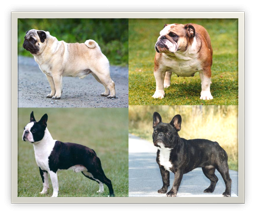 An investigation would curb problems with dog breeding through monitoring criteria and ethical delegation September 2, 2020, from: Dated link: https://www.ruokavirasto.fi/sv/privatkunder/sallskaps--och-hobbydjur/nyheter/en-utredning-skulle-tygla-problem-med-hundavel-genom-overvakningskriterier-och-etisk-delegation/ See Internet archives: An investigation would curb problems with dog breeding through monitoring criteria and ethical delegation - Livsmedelsverket (archive.org) NOTE from I
An investigation would curb problems with dog breeding through monitoring criteria and ethical delegation September 2, 2020, from: Dated link: https://www.ruokavirasto.fi/sv/privatkunder/sallskaps--och-hobbydjur/nyheter/en-utredning-skulle-tygla-problem-med-hundavel-genom-overvakningskriterier-och-etisk-delegation/ See Internet archives: An investigation would curb problems with dog breeding through monitoring criteria and ethical delegation - Livsmedelsverket (archive.org) NOTE from IFinnish report: An investigation would curb problems with dog breeding through monitoring criteria and ethical delegation
As we have been reporting, there is a surge of regulatory efforts to address concerns about the health and welfare of pedigree dogs, especially brachycephalic breeds, in several countries. The potential impact on not only dog breeders and pedigree dog organizations, but also on dog owners and even veterinarians may be considerable, as well as on many stakeholders in the pet industry. It is apparent that some of these efforts are proceeding unilaterally rather than collaboratively, however, discussions about these issues have been ongoing for many years, without the change that many think is necessary. See, for example: Challenges for Pedigree Dogs: Regulatory Enforcement of Brachycephalic Dogs in the Netherlands; which includes links to responses from various other stakeholders and kennel clubs. The regulatory body (Finnish Food Authority) in Finland has published the Summary (below) on 02 Sep 2020. This is a brief overview of recommendations based on an investigation (separately reported see links to the original 89-page report and English translation, below). This report follows numerous other investigations and regulatory decisions being undertaken in various countries, prompted by concerns for dog health and welfare, especially, but not necessarily limited to, brachycephalic breeds. IPFD has been following and reporting on such developments, and where possible, adding links to actions being taken by national kennel clubs. The Finnish KC is an IPFD partner. Please see The Finnish KC's website for commentary on the Report at: KOIRIEN TERVEYTTÄ PITÄÄ PYSTYÄ EDISTÄMÄÄN TEHOKKAASTI KOKO SUOMEN KOIRAKANNASSA. (Finnish) Article Title, English Translation: IT MUST BE POSSIBLE TO PROMOTE THE HEALTH OF DOGS EFFECTIVELY IN THE WHOLE OF FINLAND. In her commentary, Kirsi Saino focuses on cooperation and "... emphasizes that health problems must be addressed in the entire dog population if sustainable results are to be achieved."
- 3 comments
- 5,687 views
-
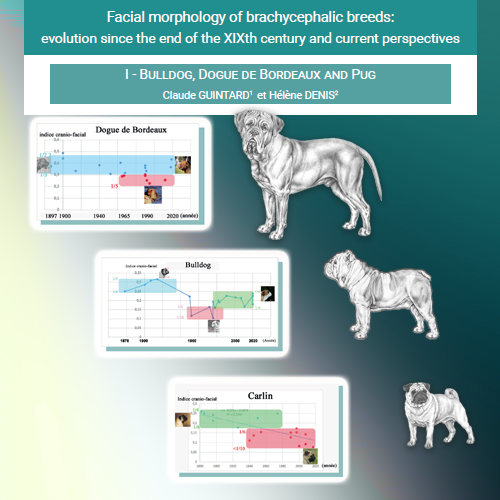 Table of Contents Download the Article Overview and Take Home Messages Why was this study done? Objectives and Results Also mentioned in this article Related content on DogWellNet See more on Breeds covered in the article in DogWellNet's Pedigree Dogs Database NOTE from IPFD: Here we are describing the basics of Dr. Guintard's article, and, as that study was prompted by other events and wider influences, we will dir
Table of Contents Download the Article Overview and Take Home Messages Why was this study done? Objectives and Results Also mentioned in this article Related content on DogWellNet See more on Breeds covered in the article in DogWellNet's Pedigree Dogs Database NOTE from IPFD: Here we are describing the basics of Dr. Guintard's article, and, as that study was prompted by other events and wider influences, we will dirFacial morphology of brachycephalic breeds: evolution since the end of the XIXth century and current perspectives
Authors, Claude Guintard1 and Hélène Denis2 offer insights into today's increasing attention on brachycephalic conformation related to health 'issues'. The short article "aims, from archival images, to try to objectify the changes in cephalic profile that may have occurred in the main brachycephalic breeds since the late 19th century." A focus on selection and development of the Bulldog, Dogue de Bordeaux and Pug breeds from the 1800's through today is illuminating in terms of how cranio-facial characteristics existed from the breeds' formation and how different breed's conformation has evolved. The article is to be published in the Société Centrale Canine's Newsletter soon. Many thanks to Hélène Denis who has graciously provided an English translation of this article for posting on DogWellNet.
- 0 comments
- 4,453 views
-
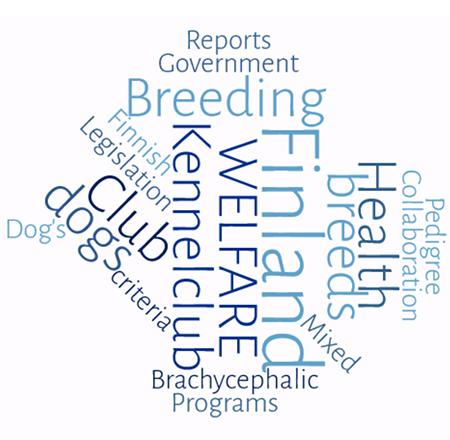 Finnish Investigation: Improving the implementation of animal welfare legislation in animal breeding Part II: Preliminary analysis of problems and means of intervention in the breeding of dogs Table of Contents Background Who is this information for? Finnish Report English - Translation Also relevant Think Globally, Act Locally Our IPFD partner, the Finnish Kennel Club is a progressive and proac
Finnish Investigation: Improving the implementation of animal welfare legislation in animal breeding Part II: Preliminary analysis of problems and means of intervention in the breeding of dogs Table of Contents Background Who is this information for? Finnish Report English - Translation Also relevant Think Globally, Act Locally Our IPFD partner, the Finnish Kennel Club is a progressive and proacFinnish Investigation: Improving the implementation of animal welfare legislation in animal breeding
Officially published in Finnish; unofficially translated to English. This investigation describe and attached here (see below) was summarized in Finnish report: An investigation would curb problems with dog breeding through monitoring criteria and ethical delegation. (That link contains a translation of the Summary written by the Finnish Food Authority as well as link to Kirsi Saino's Commentary, IT MUST BE POSSIBLE TO PROMOTE THE HEALTH OF DOGS EFFECTIVELY IN THE WHOLE OF FINLAND which was recently posted on the Finnish Kennel Club's website.) The full report/investigation outlines monitoring criteria with the aim is to eliminate dog breeding that causes the animal suffering and hereditary diseases. It is encouraging that the recommendations from the Finnish authorities are based on the excellent investigation described below and that they included authors and experts with a background in and understanding of pedigree dog breeding as well as veterinary science. For example, Katariina Mäki, PhD (animal breeding) and researcher, participated as an independent expert, and with the permission of Kennellliitto (the Finnish Kennel Club, FKK), where she is employed as a Breeding Expert. Through her role with the FKK, Katariina is a great collaborator with IPFD and has provided excellent content to DogWellNet.com (see below) and participated in the International Dog Health Workshops. Legislative and monitoring efforts for pedigree dogs and all dogs are more likely to be effective when efforts proceed collectively rather than unilaterally.
Part II: Preliminary analysis of problems and means of intervention in the breeding of dogs
- 0 comments
- 4,841 views
-
Excerpts... Action 1: The Kennel Club to develop Breed Health and Conservation Plans for several brachycephalic breeds, including Bulldog, French Bulldog, Pekingese and Pug. Action 2: For BWG members to review the breed standards for brachycephalic breeds and recommend any changes for consideration by relevant breed health co-ordinators and breed clubs, the Breed Standards & Conformation Sub-group of the KC Dog Health Group and the KC Breed Standards and Studbook Sub-committee.
- This summary report posted in June 2019 highlights key activities and progress on relevant action items. More information on BWG is available at www.ukbwg.org.uk.
- 0 comments
- 1,752 views
-
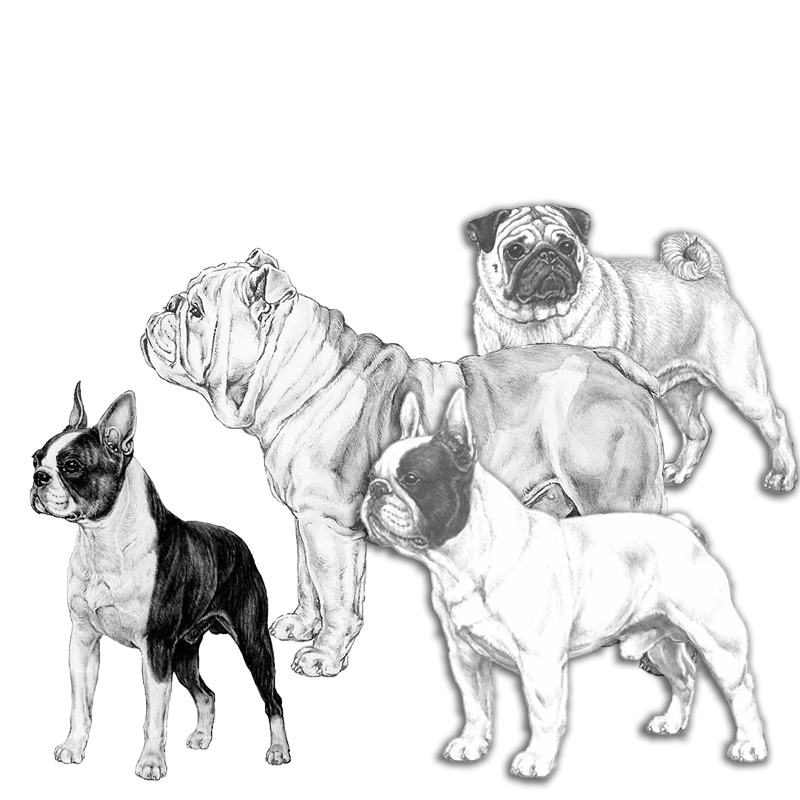 Why do people buy dogs with potential welfare problems related to extreme conformation and inherited disease? With their short muzzles and smaller upper jaws, flat-faced dogs including Bulldogs, Boston terriers, Pugs and French bulldogs — tend to have particular health issues — Never-the-less these breeds remain favorites among dog owners. The same traits that make these dogs adorable threaten their health and well-being. Just for fun... there’s a lot of personality in
Why do people buy dogs with potential welfare problems related to extreme conformation and inherited disease? With their short muzzles and smaller upper jaws, flat-faced dogs including Bulldogs, Boston terriers, Pugs and French bulldogs — tend to have particular health issues — Never-the-less these breeds remain favorites among dog owners. The same traits that make these dogs adorable threaten their health and well-being. Just for fun... there’s a lot of personality in- There is a steady stream of articles / work / initiatives coming in relative to those brachy breeds identified as highest risk for health and welfare issues. Coming from KCs - e.g. SKK...
 (See the background of and supportive documentation for this NKU project below...)
the Mops Club, Netherlands...
(See the background of and supportive documentation for this NKU project below...)
the Mops Club, Netherlands...  See the recent discussion of main features of the BALV (outcross, approval and stricter breeding rules) and communication with government and other KC's...
and from the veterinary sector ... e.g. FECAVA...
See the recent discussion of main features of the BALV (outcross, approval and stricter breeding rules) and communication with government and other KC's...
and from the veterinary sector ... e.g. FECAVA...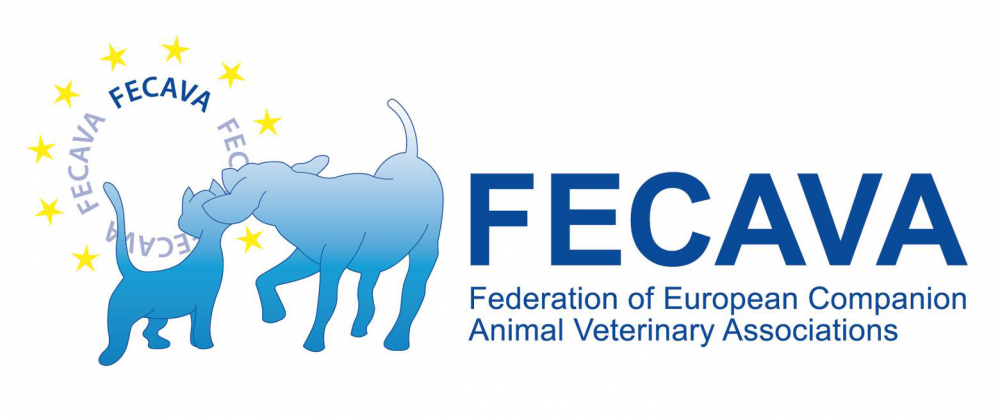
‘Extreme breeding’ of companion animals: Raising public awareness is key
In general, the work is based on scientific evidence. Of course, some of the initiatives (measurements etc) are 'new' and not yet fully proven in efficacy for what is proposed. Regardless of the basis, these proposal evoke extreme emotional and even personal responses (e.g. FB, confrontations and disagreements, etc.).
Because... at heart these issues relate to a seemingly widespread human attraction to 'extremes'.
We are happy to also present excellent articles on avoidance of extremes in other breeds - e.g. Dachshunds and Rottweilers.
Clearly, we need not only an evidence-based approach to deal with these issues, but also innovative communication strategies to effect change in human behaviours and attitudes.
FB, confrontations and disagreements, etc.).
Because... at heart these issues relate to a seemingly widespread human attraction to 'extremes'.
We are happy to also present excellent articles on avoidance of extremes in other breeds - e.g. Dachshunds and Rottweilers.
Clearly, we need not only an evidence-based approach to deal with these issues, but also innovative communication strategies to effect change in human behaviours and attitudes.
Background information Brachycephalic projects by the Nordic Kennel Union's affiliated Kennel Clubs is available at: Of particular interest are project planning documents put together by the NKU's Working group and SKK. These documents outline health and welfare issues and offer proposed actions, definitions, parameters and procedures for evaluation of dogs.Internal link: NKU STATEMENTS AND PROPOSALS REGARDING RESPIRATORY HEALTH IN BRACHYCEPHALIC DOGS.pdf ADDITIONAL INFO... 2. REVEALING THE PHENOTYPIC AND GENOTYPIC VARIATION IN FOUR BRACHYCEPHALIC BREEDS (SKK) As part of the work to combat breathing problems in brakycephalics, the Swedish Kennel Club has started a project to inventory the health status in four dog breeds: Boston Terrier, English Bulldog, French Bulldog and Pug. excerpts...
QuoteAIMS
1. To reveal if there is sufficient phenotypic and genotypic variation in four brachycephalic breeds to allow selection to achieve a change in anatomy to reduce the predisposition for Brachycephalic Obstructive Airway Syndrome (BOAS)
2. To indicate breeding animals that by fitness and morphological features would enhance the health in these breeds.
3. To relate phenotypic measures to underlying genetic factors
MATERIALS AND METHODS The project is based on “Breed” - gatherings - arranged for by the breed clubs – and supported by the national Kennel Clubs At 2-4 gatherings per breed and country and as many individuals as possible in these breeds are aimed to reach at various locations in Denmark, Finland, Norway and Sweden. These breed gatherings are aimed to attract registered as well as non-registered individuals nationally and internationally obtained to reflect the within breed variations. One to three show judges (or with comparable competence) and 1-3 veterinarians are to be recruited to perform the phenotypic description of each participating dog. Students and breed club members are recruited to assist in measurements and documentation. A form for reporting and a form to be handed out will be developed. It is essential that the event is meant to describe and not to rank the participating dogs. It is however crucial to plan for how to best inform and advice the owner if their dog is evaluated to suffer from BOAS. Information to be gathered 1. data by breed on a) Demography: gender, age, country of origin, registration number or not
b) Measures of weight, BodyConditionScore (BCS) and conformational measurements (i.e. width of Nares (WN), craniofacial ratio (CFR), neck girth ratio (NGR).
c) Photo in standardised position (whole body and Skull)
c) General and specific health conditions by surveying owners
d) A veterinary examination (clinical data including BOAS) c) and d) will follow the procedure at the examination of adult dogs for BOAS except/ before the provocation by exercise (link to the form with instructions)
2. samples for genomic analyses Cheek swabs will be obtained from each dog for molecular genetic studies a) SNP-array genotyping of around 400 dogs as described above a) By analyses of data it is intended to compare variations within and between breeds for age, gender, origin and the indicated measures – Body weight, Body Condition Score (BCS) and conformational measurements (i.e. width of Nares (WN), craniofacial ratio (CFR), neck girth ratio (NGR).
to relate it to clinical data and the data from the molecular genetic studies b) By indication of favourable phenotypes and genotypes it is intended to influence the selection of breeding stock in these breeds The full document "REVEALING THE PHENOTYPIC AND GENOTYPIC VARIATION IN FOUR BRACHYCEPHALIC BREEDS (SKK)" is available. Contact us.
♦ All these topics - extremes, breed and communication will be a focus in the 4th IDHW.... ♦
- 0 comments
- 2,891 views
-

- The Extremes of Conformation Theme has been discussed at the Dog Health Workshops held in 2012, 2015, 2017 and 2019. This document provides a timeline-based group of resources available on DogWellNet including articles, blogs and links to plenary presentations from the workshops. brachy - extremes theme - dwn - idhw - 1-4 - timeline.pdf During the past decade a great deal has been accomplished to address health and welfare issues that relate to conformation extremes across breeds. Particular focus has been paid to health challenges present in the short muzzled breeds, several of which have become exceedingly popular in recent years. Efforts have included scientific research, Kennel and Breed Club educational programs, involvements by veterinary associations located throughout the world and governmental approaches to regulating breeds provide an informed view of how extremes can impact health and welfare of dogs - views come from different stakeholder groups. We at DWN are pleased to be a part of sharing information from the Dog Health Workshops as well as other collected resources with the community.
- 0 comments
- 1,512 views
-
 See the follow up article... (Internal) European Parliament Event article by Parliament Magazine - 7-2018 For commentary on this meeting and insights into the complexities of extreme breeding, see Dr. Brenda Bonnett's latest Blog... ADDITIONAL RESOURCES FECAVA: Health and welfare impact of extreme breeding- Companion animal vets worldwide voice concern about new pug film (Dated link - see internal) (Internal) Health and welfare impact of extreme breedin
See the follow up article... (Internal) European Parliament Event article by Parliament Magazine - 7-2018 For commentary on this meeting and insights into the complexities of extreme breeding, see Dr. Brenda Bonnett's latest Blog... ADDITIONAL RESOURCES FECAVA: Health and welfare impact of extreme breeding- Companion animal vets worldwide voice concern about new pug film (Dated link - see internal) (Internal) Health and welfare impact of extreme breedin- FECAVA organized a meeting in the European Parliament on the extreme breeding of dogs and cats, together with the Federation of Veterinarians of Europe and the EU Dog and Cat Alliance. - (Meeting announcement - 5-18-2018) "Brussels, June 2018 - Extreme breeding and how to tackle it was the topic of the lunch discussion held at the European Parliament in Brussels on 26 June. Hosted by Members of the European Parliament Petras Austrevicius and Marlene Mizzi, and jointly organised the Federation of Companion Animal Veterinary Associations (FECAVA), the Federation of Veterinarians of Europe (FVE) and the EU Cat and Dog Alliance, it was the occasion for different stakeholders to share their viewpoints and suggest a way forward." See FECAVA's post-meeting News item...
- https://www.fecava.org/en/newsroom/news/news-cat/extreme-breeding-of-companion-animals-raising-public-awareness-is-key.htm (Dated link - see internal)
- 0 comments
- 3,722 views
-
 Click on the images to go to PDF Infographics and see links to the papers and further information at: http://www.ukbwg.org.uk/?page_id=490
Click on the images to go to PDF Infographics and see links to the papers and further information at: http://www.ukbwg.org.uk/?page_id=490- 2020... The Brachycephalic Working Group has posted resources on Bulldogs, French Bulldogs & Pugs... VetCompass developed infographics, which summarise brachycephalic breed research... What's available?
Bulldogs in the UK: Facing up to some challenges + full paper; French Bulldogs: Soaring UK popularity + full paper;
Pugs: Weighing up health priorities + full paper
- 0 comments
- 1,501 views
-
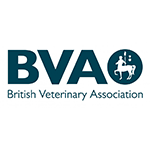 Executive summary 1. BVA is concerned that the rapid rise in the number of brachycephalic dogs in the UK is leading to a population-based increase of ill health and compromised welfare in these breed types. 2. Society as a whole, including the veterinary professions, dog owners, breeders, registering bodies, breed clubs, academics, animal charities and those with a commercial interest in the use of dogs and their images, have a social and moral responsibility to work together towa
Executive summary 1. BVA is concerned that the rapid rise in the number of brachycephalic dogs in the UK is leading to a population-based increase of ill health and compromised welfare in these breed types. 2. Society as a whole, including the veterinary professions, dog owners, breeders, registering bodies, breed clubs, academics, animal charities and those with a commercial interest in the use of dogs and their images, have a social and moral responsibility to work together towa- This publication succinctly addresses:
| Health and welfare issues associated with brachycephaly |
| Societal responsibility |
| Driving healthy standards |
| Breed Standards |
| Breed health and conservation plans |
| Brachycephalic health assessments |
| Marketing and advertising |
| The role of the veterinary professions |
| 10-point plan for veterinary practices |
| Research |- BVA Position Brachycephalic Dogs - January 2018
- BVA-position-brachycephalic-dogs-Jan-2018 (Internal)
"In the ten years to 2017 there has been a rapid rise in ownership and number of brachycephalic dogs in the UK (both those that are Kennel Club-registered and in the wider dog population1). According to Kennel Club figures, registration of these breed types has risen dramatically of the past ten years, with a 3104% increase in French Bulldog registrations, a 193% increase in Pug registrations and a 96% increase in Bulldog registrations.2 BVA is concerned that this rise in numbers is leading to a population-based increase of ill health and compromised welfare in these breed types. Figure 1 visually illustrates the rise in proportional annual birth rates amongst some brachycephalic breed types over the 2004-2016 period."
- 0 comments
- 1,784 views
-
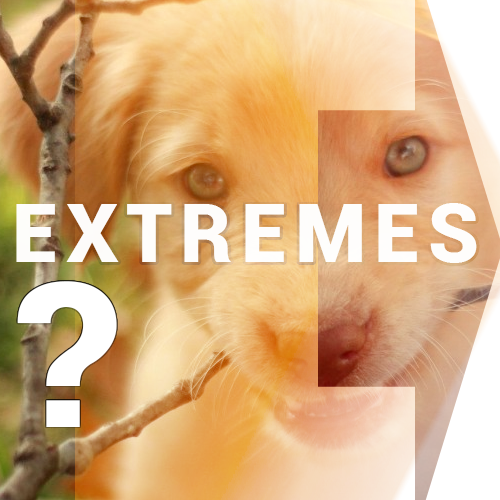 In 2015 DogWellNet began to feature articles and resources to highlight 'The Brachycephalic Issue'. These articles provide a historical perspective on actions taken by various stakeholders (Kennel and Breed Clubs, researchers, veterinarians and breeders...) to address growing concerns about the health and welfare of the short-faced dogs. Actions on many levels have lead to the creation of educational programs and educational resources designed to reach the general public, dog owners, breede
In 2015 DogWellNet began to feature articles and resources to highlight 'The Brachycephalic Issue'. These articles provide a historical perspective on actions taken by various stakeholders (Kennel and Breed Clubs, researchers, veterinarians and breeders...) to address growing concerns about the health and welfare of the short-faced dogs. Actions on many levels have lead to the creation of educational programs and educational resources designed to reach the general public, dog owners, breede- Key DWN resources related to issues involved with understanding and management of extreme phenotype are provided here.
- The Brachycephalic Issue
- IDHW Plenary talks and suggested reading
- Country-Kennel Club specific programs
- DWN articles
- relevant DWN Blog posts
- 0 comments
- 4,110 views
-
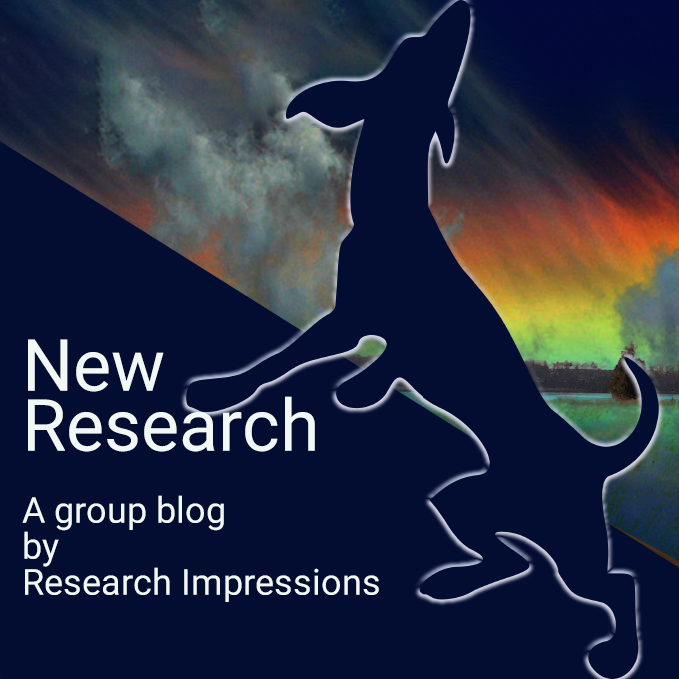 The second post highlights research involving a Pilot study of head conformation changes over time in the Cavalier King Charles spaniel breed which explores how head shapes relate to scientific information on SM/CM in Cavaliers. Judges and dog breeders may be interested in looking at this research paper. Both these research papers were published in 2019. Also see:
The second post highlights research involving a Pilot study of head conformation changes over time in the Cavalier King Charles spaniel breed which explores how head shapes relate to scientific information on SM/CM in Cavaliers. Judges and dog breeders may be interested in looking at this research paper. Both these research papers were published in 2019. Also see:- February 2019 We'd like to call your attention to two posts in DWN's New Research Blog. See Brenda Bonnet's review of this research coming from Austalia that "covers the health problems and welfare issues in brachycephalic dogs highlighting a veterinary perspective."
- 0 comments
- 1,879 views
-

- In Windsor (UK) in June 2019, the IPFD 4th International Dog Health Workshop (IDHW) took place (Pegram et al., 2020) a key recommendation was to initiate a multi-stakeholder International working group on extreme conformation, with an initial focus on brachycephalics . Please note: This group is now called the International Collaboration for Extreme Conformation in Dogs and can be found in https://www.icecdogs.com/home/news Premise: The International Working Group on Extreme Conformation in Dogs (IWGECD) will be a platform in which national and international working groups, experts and stakeholders join forces to enhance the health, well-being and welfare of all dogs by limiting the negative welfare impacts from extreme conformations in dogs. Mission The IWGECD will:
- Identify different approaches
- Collect, when needed review, and share scientific papers and other material
- Identify different opinions – agree that sometimes we disagree but that we can all grow in knowledge from these disagreements
- Share experiences and/or data
- Share new ideas
- Build on successes
- See how we can move forward together
- Multistakeholder national working groups involved in breed-associated health problems due to their extreme conformation. In countries where
- there is a need, but no such group has yet been established, the IWGECD will promote and/or facilitate setting up national working groups
- National and International stakeholder organizations with the same aim including veterinary and charity bodies
- Individual experts
- Industry is also considered to be a stakeholder
- Academia
- Breed clubs and kennel clubs
- Government and legislative bodies
- 0 comments
- 2,235 views
-
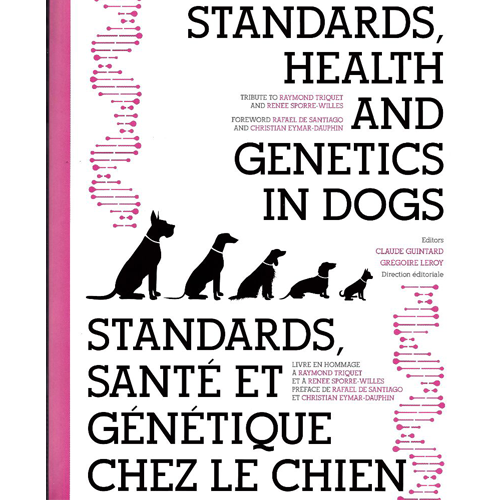 See the complete text in English. Standards, health and hypertypes in Dogs (full) José Luis Payró Dueñas (Mexico).pdf See the complete text in French. Standards, santé et hypertypes chez le Chien (full-FR) José Luis Payró Dueñas (Mexico).pdf OVERVIEW & EXCERPT Abstract It is of great importance for dog breeders to properly interpret the breed standard, since it is the base upon which dogs are selected for reproduction and these animals will p
See the complete text in English. Standards, health and hypertypes in Dogs (full) José Luis Payró Dueñas (Mexico).pdf See the complete text in French. Standards, santé et hypertypes chez le Chien (full-FR) José Luis Payró Dueñas (Mexico).pdf OVERVIEW & EXCERPT Abstract It is of great importance for dog breeders to properly interpret the breed standard, since it is the base upon which dogs are selected for reproduction and these animals will p- Here we feature a text entitled Standards, health and hypertypes in dogs, by Pr. José Luis Payró Dueñas (Mexico) from the book, Standards, Health and Genetics in the Dog. (Read more about the book here.)
Veterinarian, Professor and President of the Americas and Caribbean Section of Fédération Cynologique Internationale, Pr. José Luis Payró Dueñas discusses brachycephalic traits, and other morphologies that impact function of purebred dog breeds. Brachycephalic breed traits and management are covered in some depth. In the writing Pr. José Luis Payró Dueñas outlines steps breeders adopt to achieve effective selective breeding. Dog breeder's evaluations of breeding dogs based on their and breed judge's interpretations of the Breed Standard, breeder evaluations of dogs' pedigrees and their knowledge of the heritability of observable traits that contribute to disease or health are explored. ..."poor interpretation of the standards can cause a breeder to produce specimens with hypertypes or with deformations that will remain concentrated in the breed, producing hereditary diseases. When evaluating a dog, the judge values the effort and the production of every exhibitor whose aim must not just be the pride of winning, but the goal of fixing the type by not selecting those specimens with the hypertypes that are not desired in the breed." Seeing to health and welfare of dogs is judges' and breeders' responsibility - correct construction and interpretation of breed standards is essential.
- 0 comments
- 2,570 views
-
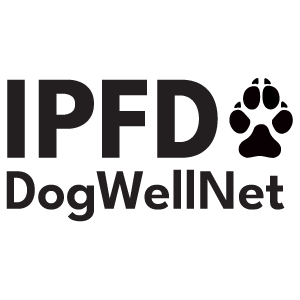 Brief excerpt of summary slides: Summary – quick quips… see details in pdf file. • Only the UK (The Kennel Club) and USA (AKC) have both French and English Bulldogs in the top 10 most popular among new registrations in 2021. • The UK is only country with all three breeds in top 10 popularity for new registrations • The percentage of the registered population for French Bulldogs is substantially higher in the UK, and higher in the USA and Ireland (IKC) than other countries.
Brief excerpt of summary slides: Summary – quick quips… see details in pdf file. • Only the UK (The Kennel Club) and USA (AKC) have both French and English Bulldogs in the top 10 most popular among new registrations in 2021. • The UK is only country with all three breeds in top 10 popularity for new registrations • The percentage of the registered population for French Bulldogs is substantially higher in the UK, and higher in the USA and Ireland (IKC) than other countries.How many are there? French Bulldogs, English Bulldogs and Pugs in Kennel Club Registries from 10 Countries
Those in the dog world - everyone interested in dogs - will have seen many articles, media and educational programs, and publicity about the health and welfare concerns surrounding brachycephalic (flat-faced) dogs.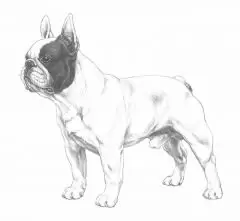 As these dogs, particularly the three breeds on which we focus in this article, have increased in popularity over the years, the challenges with their health have begun to receive a lot of attention - from many stakeholders, including veterinarians, welfare groups, legislators, and others. Not only do the conformation and characteristics of brachycephalics lead to respiratory (breathing) problems, eye issues, spinal abnormalities, skin problems, and more, many of these conditions negatively impact the welfare and well-being of affected dogs. But people continue to want them, show people are very attached to the specific conformations, and numbers in some countries continue to increase. But is it the same everywhere?
As these dogs, particularly the three breeds on which we focus in this article, have increased in popularity over the years, the challenges with their health have begun to receive a lot of attention - from many stakeholders, including veterinarians, welfare groups, legislators, and others. Not only do the conformation and characteristics of brachycephalics lead to respiratory (breathing) problems, eye issues, spinal abnormalities, skin problems, and more, many of these conditions negatively impact the welfare and well-being of affected dogs. But people continue to want them, show people are very attached to the specific conformations, and numbers in some countries continue to increase. But is it the same everywhere?
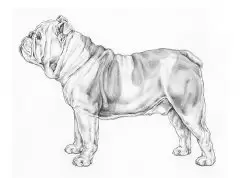 Using data from national kennel clubs we have compiled a summary of the numbers, the popularity, and the percentage of registered dogs across 10 countries. Some of the findings indicate a continued or increasing popularity of these breeds, in other countries registrations are dropping. Why? It may be because of legislative and legal actions within countries, related to urgent pleas from veterinary associations, and/or intentional actions by kennel clubs. Our data do not answer that question, but provide information to support discussions.
Using data from national kennel clubs we have compiled a summary of the numbers, the popularity, and the percentage of registered dogs across 10 countries. Some of the findings indicate a continued or increasing popularity of these breeds, in other countries registrations are dropping. Why? It may be because of legislative and legal actions within countries, related to urgent pleas from veterinary associations, and/or intentional actions by kennel clubs. Our data do not answer that question, but provide information to support discussions.
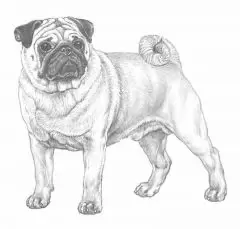 It is important to note that registration statistics from kennel clubs do not accurately reflect the number of dogs in a country or, necessarily, the overall, relative popularity of breeds; these are new registrations of pedigree dogs and in many countries many purebred or apparently purebred dogs originate from outside the kennel club. In some countries, not all pedigree dogs that are born end up being registered. However, the influence of kennel clubs cannot be discounted.
As always, IPFD urges the many stakeholders involved in the issues of health, well-being and welfare of dogs to work collectively and collaboratively to address these complex problems.
The brief excerpts below show you a summary across breeds within countries. The pdf below provides many more details and includes links to many of the resources compiled on DogWellNet.com on the brachycephalic issue.
This material can be shared on other channels, with appropriate acknowledgement of IPFD.
Questions? Contact us at info@ipfdogs.com.
It is important to note that registration statistics from kennel clubs do not accurately reflect the number of dogs in a country or, necessarily, the overall, relative popularity of breeds; these are new registrations of pedigree dogs and in many countries many purebred or apparently purebred dogs originate from outside the kennel club. In some countries, not all pedigree dogs that are born end up being registered. However, the influence of kennel clubs cannot be discounted.
As always, IPFD urges the many stakeholders involved in the issues of health, well-being and welfare of dogs to work collectively and collaboratively to address these complex problems.
The brief excerpts below show you a summary across breeds within countries. The pdf below provides many more details and includes links to many of the resources compiled on DogWellNet.com on the brachycephalic issue.
This material can be shared on other channels, with appropriate acknowledgement of IPFD.
Questions? Contact us at info@ipfdogs.com.
Download the PDF: Across Country Comparison Brachycephalic Breeds for Distribution.pdf
- 0 comments
- 7,034 views
-
 Webinars Updates in the management of the BOAS patient Speakers: Jane Ladlow and Nai-Chieh Liu From: BSAVA Webinar Library DOI: 10.22233/9781910443491.webinar130219 First broadcast: February 2019 Can a brachycephalic dog be a healthy dog an
Webinars Updates in the management of the BOAS patient Speakers: Jane Ladlow and Nai-Chieh Liu From: BSAVA Webinar Library DOI: 10.22233/9781910443491.webinar130219 First broadcast: February 2019 Can a brachycephalic dog be a healthy dog anBSAVA's Brachycephalic Resources Collection
"This short collection lists a number of BSAVA brachycephalic resources informing members on the continuing brachycephalic welfare debate. Most of the content of the collection is freely available to support the veterinary profession." Several of the resources are Open Access. The content is dated from 2018, 2019 & 2020 and 2021's BSAVA Congress Proceedings, and published content from BSAVA Companion Issues (monthly membership magazine). This article contains useful resources for veterinarians, breed managers / health committees, owners and breeders.
- 0 comments
- 1,018 views
Important Information
By using this site, you agree to our Terms of Use.

